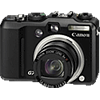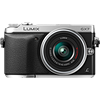Main
Model
Price
Advantages
launch
Announced
Body type
Camera subcategory
Sensor
Effective pixels
Max resolution
Sensor size
Sensor type
Processor
Image ratio w:h
Other resolutions
Sensor photo detectors
Image
ISO
White balance presets
Custom white balance
Image stabilization
Uncompressed format
JPEG quality levels
Boosted ISO (minimum)
Photography features
Minimum shutter speed
Maximum shutter speed
Aperture priority
Shutter priority
Built-in flash
Flash range
External flash
Flash modes
Continuous drive
Self-timer
Exposure compensation
Manual exposure mode
Subject / scene modes
Metering modes
AE Bracketing
WB Bracketing
Screen / viewfinder
Screen size
Screen dots
Touch screen
Live view
Viewfinder type
Articulated LCD
Screen type
Viewfinder coverage
Viewfinder magnification
Viewfinder resolution
Videography features
Resolutions
File Format
Microphone
Speaker
Optics & Focus
Focal length (equiv.)
Optical zoom
Maximum aperture
Autofocus
Digital zoom
Manual focus
Normal focus range
Macro focus range
Number of focus points
Lens mount
Focal length multiplier
Physical
Weight (inc. batteries)
Dimensions
Environmentally sealed
Battery
Battery details
Battery Life (CIPA)
Storage
Storage types
Storage included
Connectivity
USB
HDMI
Wireless
Wireless notes
Remote control
Other features
Orientation sensor
GPS
Samples
Videos
Summary
The Lumix DMC-GX7 highest resolution of 4592 x 3448 pixels (16 megapixels) is better than the Canon PowerShot G7 highest resolution of 3648 x 2736 pixels (10 megapixels). The Lumix DMC-GX7 is equipped with larger sensor than the Canon PowerShot G7: Four Thirds (17.3 x 13 mm) versus 1/1.8' (7.144 x 5.358 mm). It is the most important difference between these models as large sensor lets the photographer to produce pictures of the more professional quality. The Lumix DMC-GX7 has a wider ISO range of 125-25600 than 100-1600 ISO range of the Canon PowerShot G7. Such ISO numbers allow you to produce good quality pictures in more difficult situations. The Lumix DMC-GX7 can save files in RAW format which gives the highest quality files by recording all of the data from the sensor. The Lumix DMC-GX7 provides more focus points than the Canon PowerShot G7: 23 vs 9. More number of focus points means more convenience when attempting to focus on subjects that are not centred.
The Lumix DMC-GX7 display is better as it has more screen dots 1,040,000 in compare to 207,000 dots of the Canon PowerShot G7 display. The higher dot count display is better for reviewing images on your camera. The Lumix DMC-GX7 is equipped with Yes inch touch screen that is larger than No inch display of the Canon PowerShot G7 The Lumix DMC-GX7 has better lowest (60 seconds) and highest (1/8000 second) shutter speeds.
The PowerShot G7 weighs 380g which is 22g less than the weight of the Lumix DMC-GX7.
The Lumix DMC-GX7 has 16 advantages and the Canon PowerShot G7 only 2 so the Lumix DMC-GX7 becomes the best choice. Check the list of the best offers on Amazon.


